Spiral Jetty by Robert Smithson: Making the Journey
We’re not usually spur-of-the-moment trip people. Our trips are often planned out months, if not a year in advance (especially in the case of Route 66, which was a masterclass in itself).
But early in the morning of Saturday, January 27, 2017, I sat at our dining room table reading a New York Times article on the challenges of maintaining and selling land-based art (as one does).
“That’s it!” I thought to myself. “How hard can it be to get to Spiral Jetty?”
Turns out, not too hard, as long as the weather conditions are right.
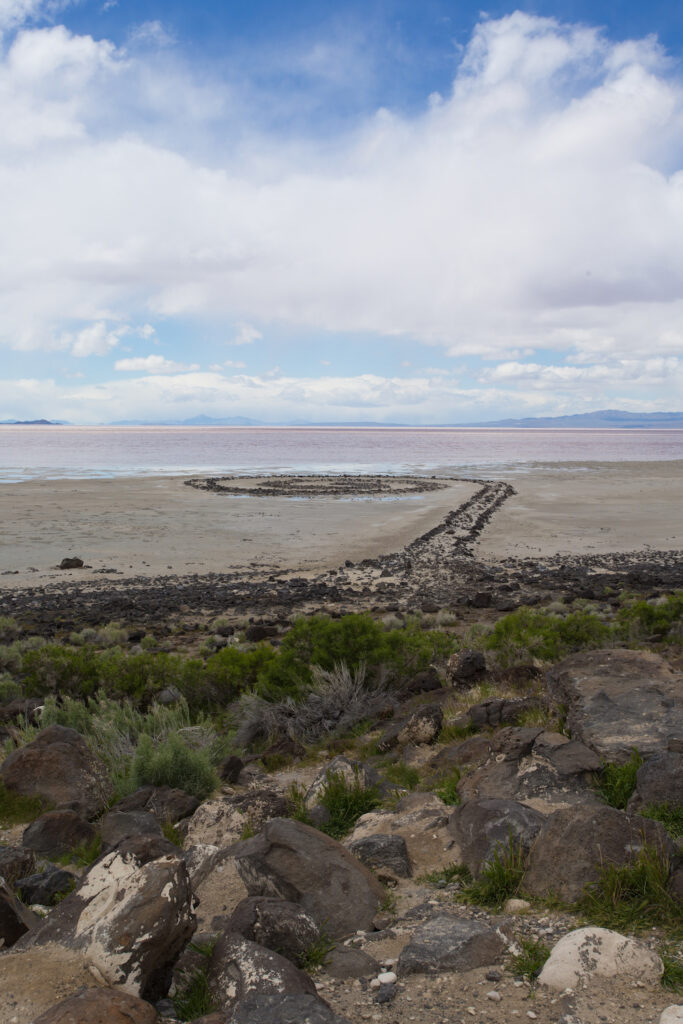
So when Dan woke up, I accosted him with my plan, figured out when it was cheap(ish) to fly to Utah, and we booked a week of adventures in March with a few bonus stops at Bryce Canyon and Zion for good measure.
Spiral Jetty is artist Robert Smithson’s most famous work, a man-made spiral of basalt rock that juts out into the Great Salt Lake along its northeastern shore at Rozel Point.
As one of the core members of the minimalist/earthworks movement in the late 1960s, Smithson was a canonical mention in my art history classes, along with Donald Judd, Michael Heizer, and Nancy Holt.
He constructed Spiral Jetty in 1970, pulling rocks and earth from the beach to build a 1500-foot spiral that stretches 15 feet across at its widest point.
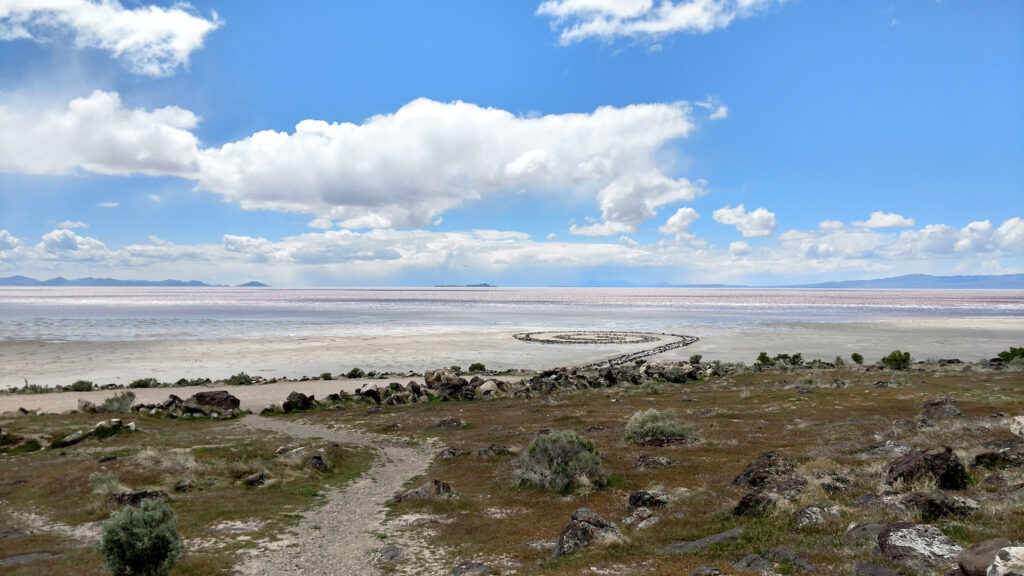
Photos of Spiral Jetty always fascinated me. The eerie lunar-ish landscape, the Tim Burton-esque design, the way the work shifted with the time and tide, as Smithson intended, even though he never got to see how it evolved over the decades.
(In 1973, Smithson died in a plane crash while surveying his work Amarillo Ramp; more on that here.)
But for all of my articipant life, Spiral Jetty seemed just that: a remote thing in pictures. For some reason, it didn’t occur to me to just… go there.
To get to Spiral Jetty, you just drive north from Salt Lake City until you hit Golden Spike National Historical Park.
Then you make a left, following the road as it shifts from paved to gravel to dirt, winding your way around the hills and down to the edge of the lake.
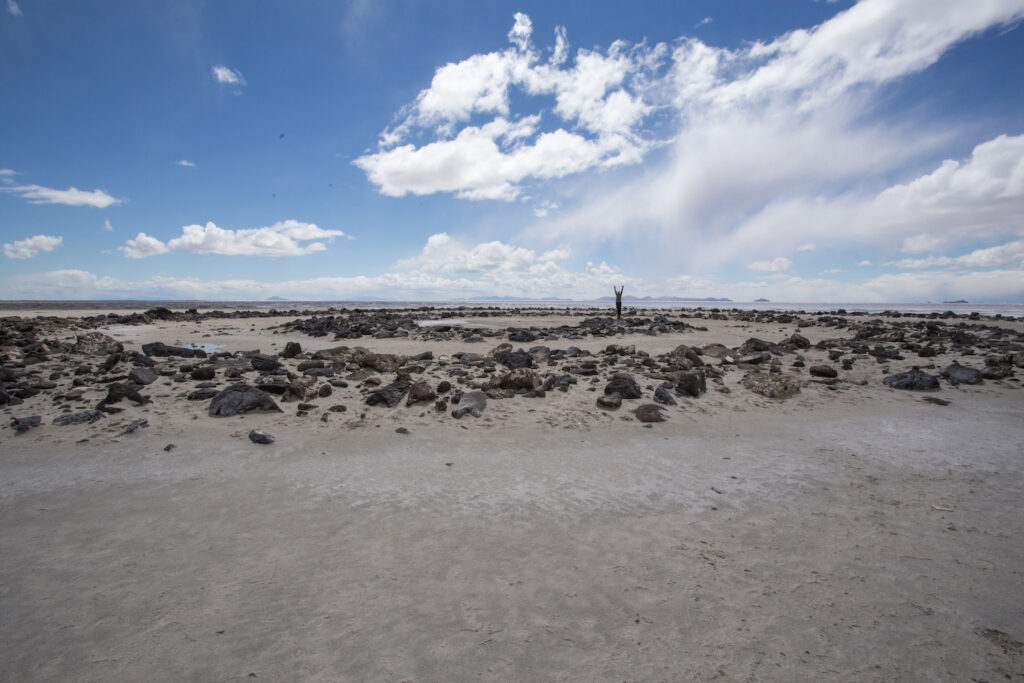
All of a sudden, it’s there.
We were the only visitors to Spiral Jetty on that windblown March afternoon, cold but clear with no rain in the forecast. One car departed as we parked, and then we had the Jetty to ourselves.
Walking the length of the Jetty from shore to center point like a mandala, we admired the horizon shift and carefully watched our step as we went from rock to rock. “Mud, salt crystals, rocks, water,” as Smithson described it in repetition.
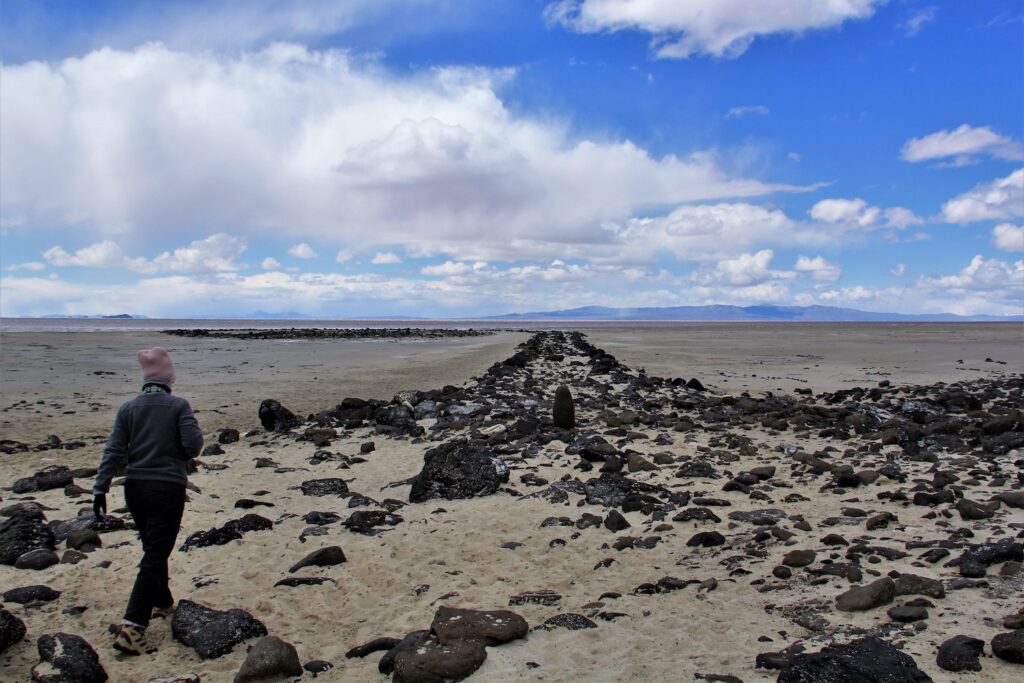
As he noted in a 1971 interview:
“If you’re walking on the Jetty, you’re in a sense thrown onto an outer edge, and then you move into a kind of interior situation […] the constriction or concentration exists within the inner coils of the Jetty whereas on the outer edge you’re kind of thrown out, you’re aware of the horizons and how they echo through the Jetty. So it exists both inside and outside in terms of the actual experience of being on it.”
The blue of the sky, the pink of the water beyond the pale shore, the charcoal of the rocks–nature became otherworldly, a colorful display in sharp contrast to the gray-green scrub of the hills beyond the beach.
These days, Spiral Jetty is completely surrounded by beach, no longer submerged underwater.
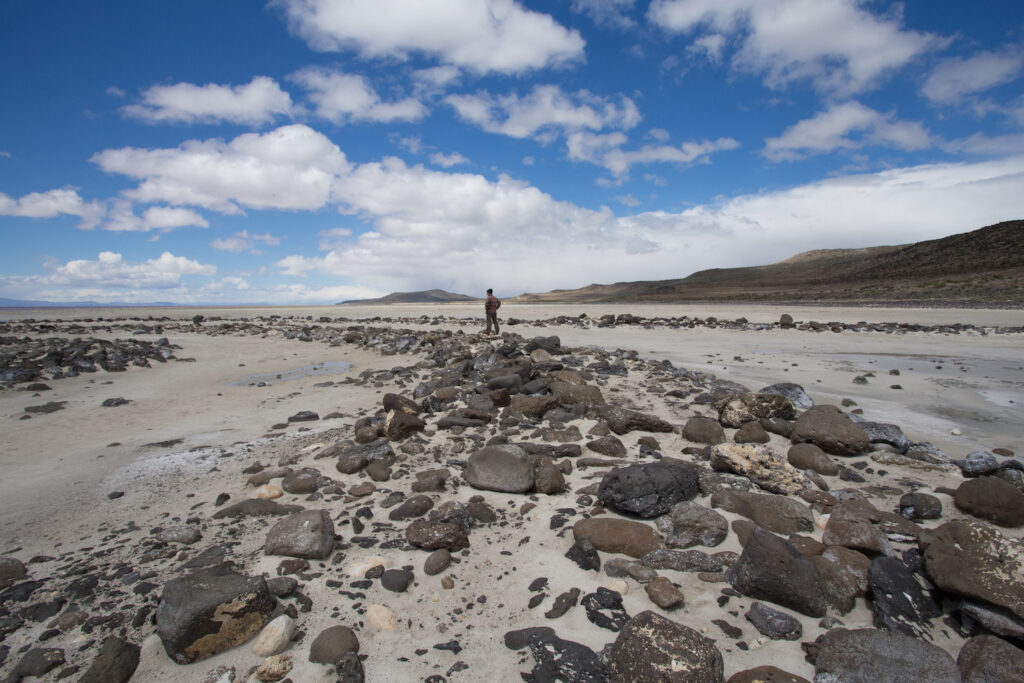
Bits of sea glass glint around the edges, and writing in the sand from other visitors surrounds the work. The corrosion of time is evident, and that’s part of the work’s enduring beauty.
If you’re the kind of person who can sit and watch waves crash against rocks for hours, you’ll understand how one could spend a lot of time just looking at this piece of art from all angles, up and down the hillside, walking, gazing, contemplating.
Not everyone would find this kind of trip worthwhile, but it was a pilgrimage I needed to take.
VISITOR INFORMATION
SPIRAL JETTY
Rozel Point, Great Salt Lake, Utah
Visit the Dia Foundation website for driving directions (approximately 2 1/2 hours from Salt Lake City).

